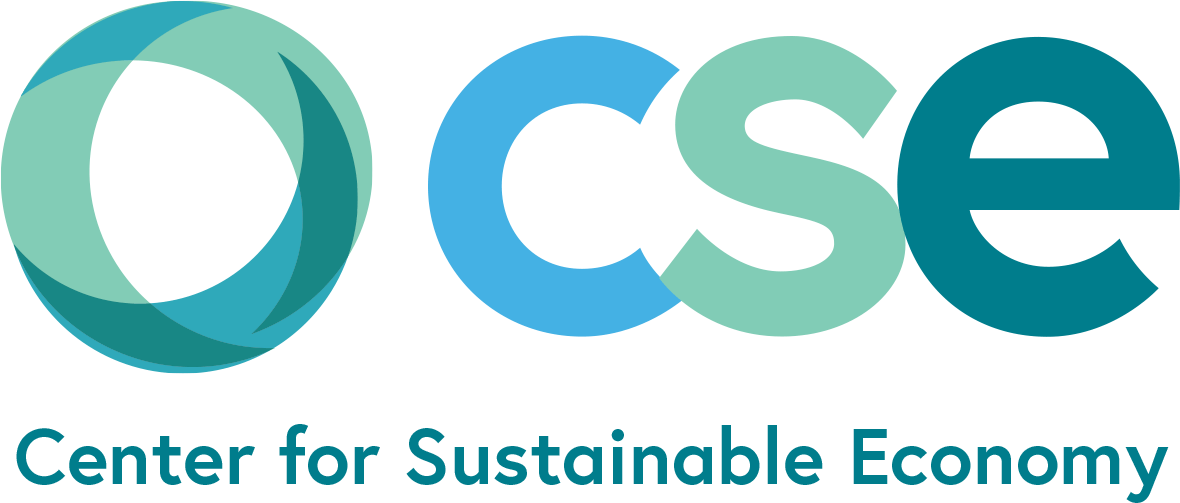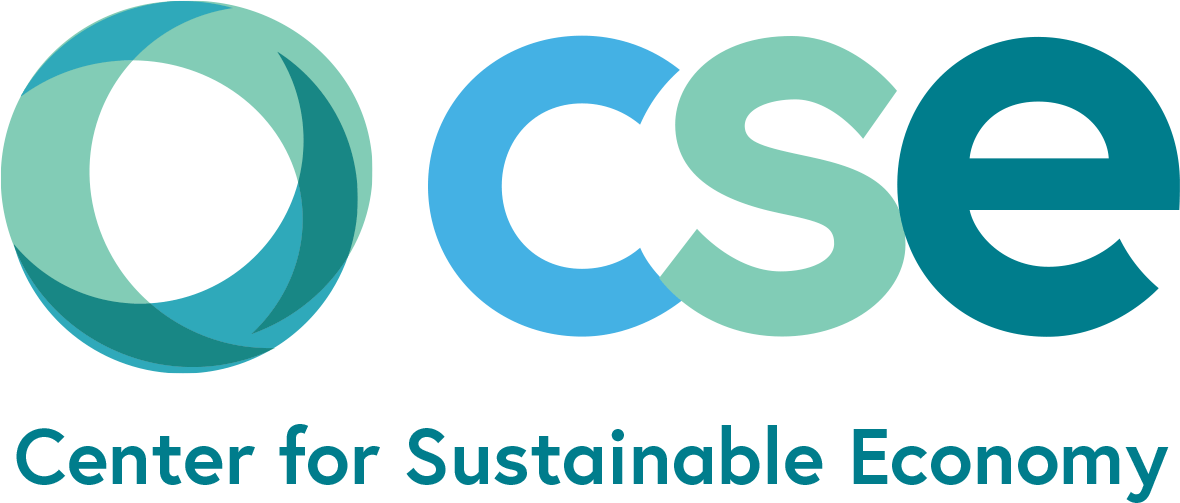DNR vs. Climate Stability - Round Two
John Talberth • March 12, 2023
Agency doubles down on climate denial instead of protecting carbon rich forests
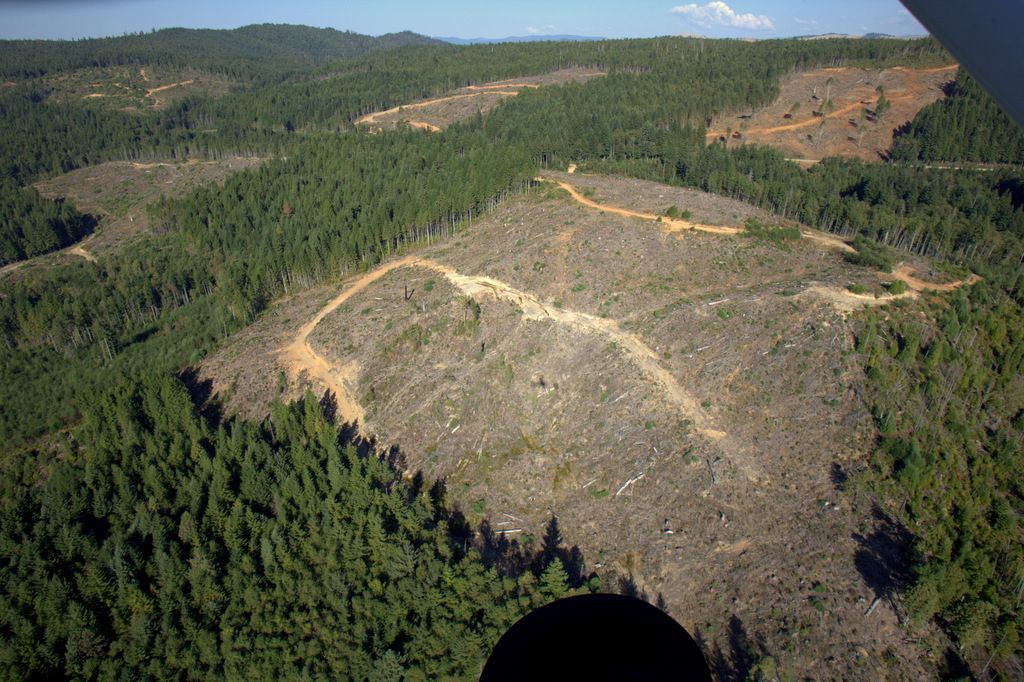
Last October, CSE and Save the Olympic Peninsula prevailed in their lawsuit seeking to force Washington’s Department of Natural Resources (DNR) to consider climate impacts of logging mature legacy forests as required by the State Environmental Policy Act (SEPA). In that ruling, Judge Keith Harper found that DNR’s determinations of non-significance (DNS) for two Jefferson County timber sales were clearly erroneous for failing to make any mention, let alone analysis of, greenhouse gas (GHG) emissions associated with logging or other climate impacts such as increased temperatures or landslide risk.
Instead of using that decision as an opportunity to protect carbon rich forests from logging, DNR has doubled down on its pattern of climate denial by authorizing dozens of new, high impact logging proposals that once again fail to account for climate impacts. But this time, the agency has cut and pasted about a page and a half of obfuscatory language into its SEPA environmental checklists in hopes of heading off round two of climate litigation.
In response, CSE and its partners Legacy Forest Defense Coalition (LFDC) and STOP have challenged the agency’s failures once again and will likely be heading back to court to expose the myths and falsehoods contained in the band-aids DNR has slapped on to its environmental checklists. In particular:
- Despite Judge Harper’s decision, DNR claims that it has no obligation to consider climate impacts at the project level. Instead, the agency argues that generic discussions contained in past, non-project EISs shield the agency from doing anything more. However, SEPA, recent court decisions, and DNR Commissioner’s Order 202006 do not, in fact, provide this discretion. To the extent that prior landscape or programmatic EISs are relevant, they must be incorporated into project-level SEPA documents through an orderly phased review process and supplemented with site specific information, such as estimates of project-level GHG emissions, the forgone sequestration associated with new roads, or temperature changes associated with loss of the forest canopy.
- DNR asserts that “[u]sing a gross estimate of carbon dioxide released from the harvest of an individual stand of timber provides no useful information” for evaluating climate impacts. This is an irrational statement. Anthropogenic releases of GHG pollution are the primary driver of climate change. And mature forest logging projects like the Juneau timber sale are ‘carbon bombs’ that each release tens of thousands of metric tons CO2 and convert some of the world’s most productive carbon sinks into net sources of emissions for well over a decade after logging. Quantifying GHG pollution released or committed in association with DNR logging projects would provide the agency with information needed to minimize such pollution in project level design through, for example, barring any new road construction, logging of mature forests, or clearcutting.
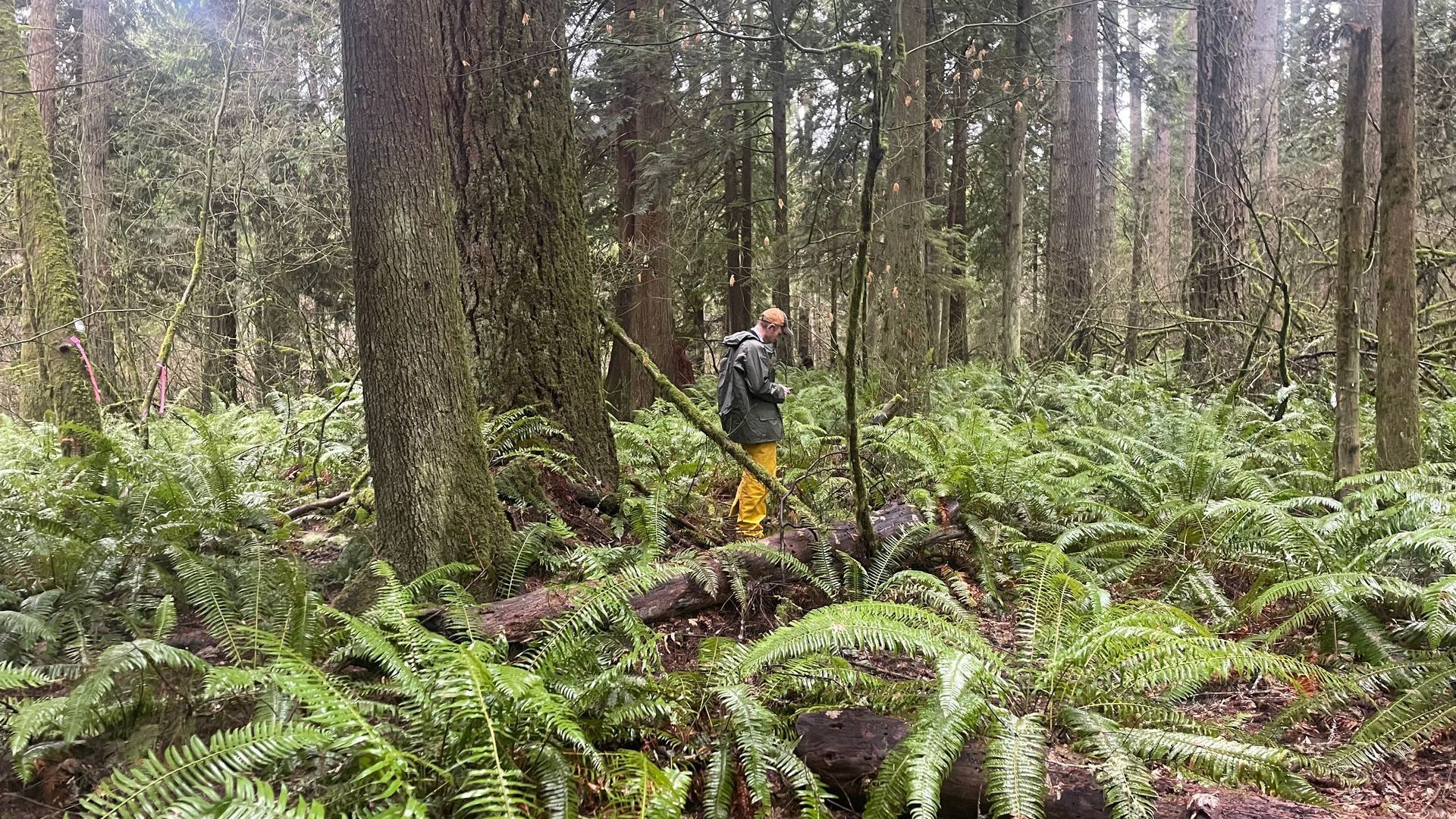
- DNR embraces timber industry rhetoric claiming that its products are less carbon intensive than substitutes, like concrete or steel. However, that is only true for fossil-fuel (energy) related emissions. When biogenic and fossil fuel related emissions are taken into account, conventional wood products are far more carbon intensive than any of these substitutes. For example, and as noted in our challenge letters, results from Hudiburg et al. (2019) suggest a carbon intensity of about 10.27 tCO2-e/mbf in Washington State. Using standard conversion factors from Global Wood, this translates into about 32 tCO2-e per metric ton of finished Douglas fir lumber, far beyond recent LCA estimates for steel (~2 tCO2e/t) or concrete (~ 1 tCO2-e/t).
- DNR continues to make the case that as long as its forestlands are capturing more carbon than they release from logging the climate impacts of its logging program are zero. But there are two problems with that. First, the most recent forest carbon data available show that losses of carbon from DNR lands through logging and mortality actually exceed carbon capture. Because of this, DNR has the dubious distinction of being in last place with respect to carbon sequestration in western Washington. Secondly, even if DNR were breaking even, it still represents a major loss of carbon sequestration capacity since natural forests, especially in this region, can capture many times more carbon than they release if left unlogged. For example, on unlogged portions of the Gifford Pinchot National Forest nearly ten times more carbon is captured than released (see chart, below). DNR’s degradation of this natural capacity down to a 1:1 ratio or less means that much more carbon is being left in the atmosphere as a result of its logging program relative to the natural forest carbon cycle.
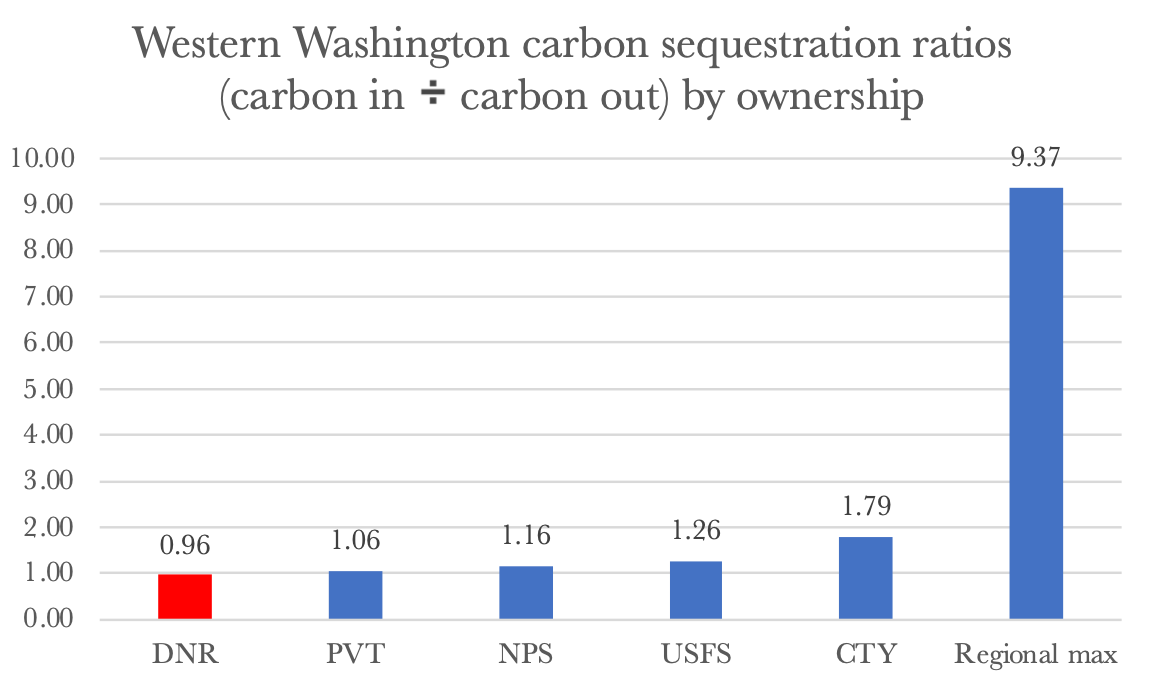
DNR has the lowest ratio of carbon in (via growth of above-ground biomass) to carbon out (via harvest and mortality) than any other forestland owner group in western Washington. Source: USDA Forest Service, Forest Inventory and Analysis Program, EVALIDator web-application Version 2.0.6.
As they seek support from voters in 2024, Governor Inslee and Commissioner Franz must abandon their pattern of climate denial and recognize that clearcutting DNR forestlands is a major disruption of the natural carbon cycle with profound impacts on climate change and climate resiliency.
Please review the following for more details about what CSE, LFDC and STOP are doing to reduce the climate impacts of DNR’s logging program:
- CSE-STOP consolidated comments on multiple DNR timber sales
- Declaration of Dr. Dominick DellaSala in support of CSE-STOP comments
- CSE-LFDC-STOP Juneau timber sale comments
- DNR response to Juneau comments
- CSE-LFDC-STOP rebuttal to DNR response

